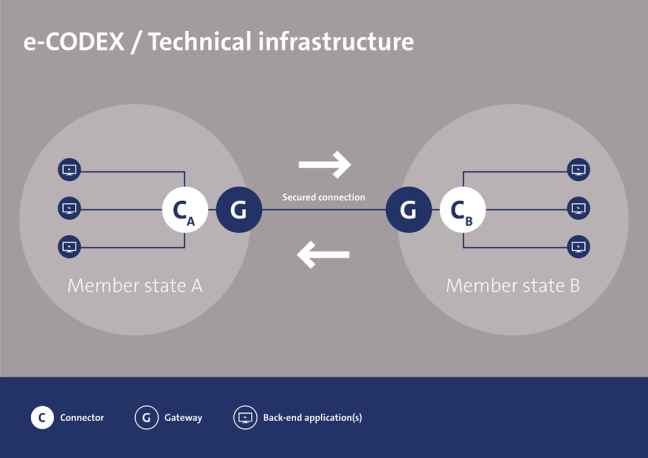

One of the pillars that the EU is built upon is the objective to make borders seamless. More than 400 million citizens have free movement in the Schengen Area, truly making Europe feel borderless. To deepen the possibilities of this philosophy, the Digital Single Market strategy, among other priorities, aimed to remove virtual borders. The e-CODEX (e-Justice Communication via Online Data Exchange) tool was introduced in 2010 with the aim to connect the European e-justice community. With this tool, legal actions regarding properties, pensions, and e-commerce with a cross-border nature are easier to overcome.
The aim of e-CODEX is to facilitate the work of national courts, and provide cross-border justice for citizens, businesses, and legal professionals. To this end, e-CODEX provides access to judicial information and boosts judicial cooperation by improving the interoperability between legal authorities within the European Union. Technical solutions are designed to cope with different legal systems and include a methodology for mutual equal interpretation of legal terms. Digitalisation allows this to become a reality and ensures secure communication across the Member States. The tool is built on the following principles:
The technical components of e-CODEX are open source building blocks, mainly consisting of a connector and a gateway. The Domibus Gateway as well as the Domibus Connector are freely available under a European Union Public Licence (EUPL v1.2). The installation of the gateway ensures a secured connection with a gateway in another Member State while the connector carries out the adaptations required for receiving encrypted data by the corresponding service provider in another Member State.
The security of the information exchanged through e-CODEX is key as any risks of malicious use of the system could invalidate legal proceedings. This is the reason why the secure electronic information exchange between existing national solutions is facilitated by an interoperability layer for electronic signatures. This validation tool recognises a person’s signature using a certificate issued in his or her home country in order to authenticate users.
The technical infrastructure of e-CODEX is shown below:

The Domibus gateway building block ensures communication between e-CODEX users and is built on multiple standards. The latest Domibus version was released in January 2022. This connection is also called e-Delivery.
The e-CODEX project officially ran during 2010-2016, after which it had extended deployment in further projects of the European Commission such as e-CODEX Plus, Evidence2e-CODEX, and Pro-CODEX among others. Since then, it is managed by a consortium of Member States (and other organisations) and financed by an EU grant. The EU aims to fully implement e-CODEX by the end of 2023, in order to reach the objective of digital justice, with the Proposal for a Regulation Concerning the e-CODEX System for Judicial Cooperation in Civil and Criminal Matters, or simply e-CODEX Regulation. With this, e-CODEX would be managed by the eu-LISA Agency. Plenary vote on the regulation is expected this month, March 2022.